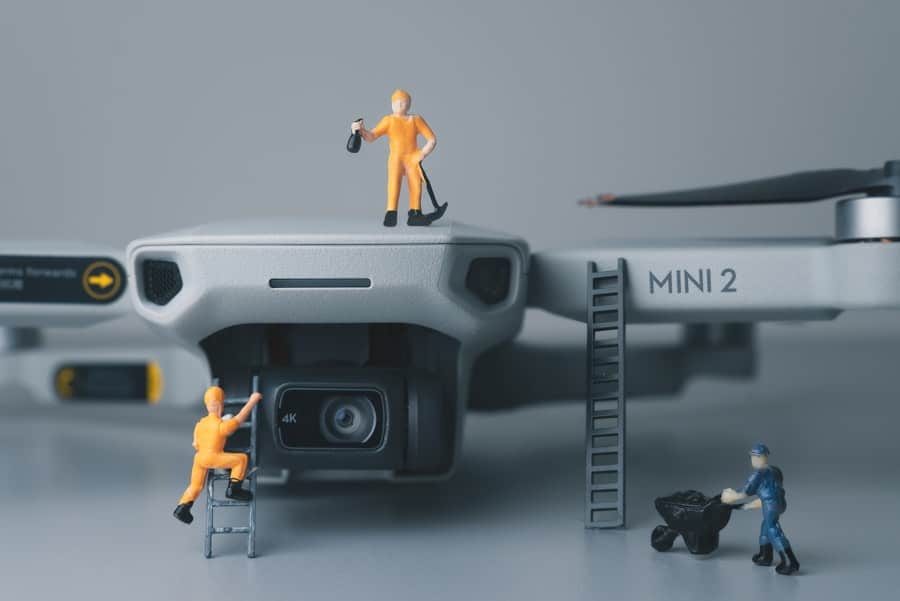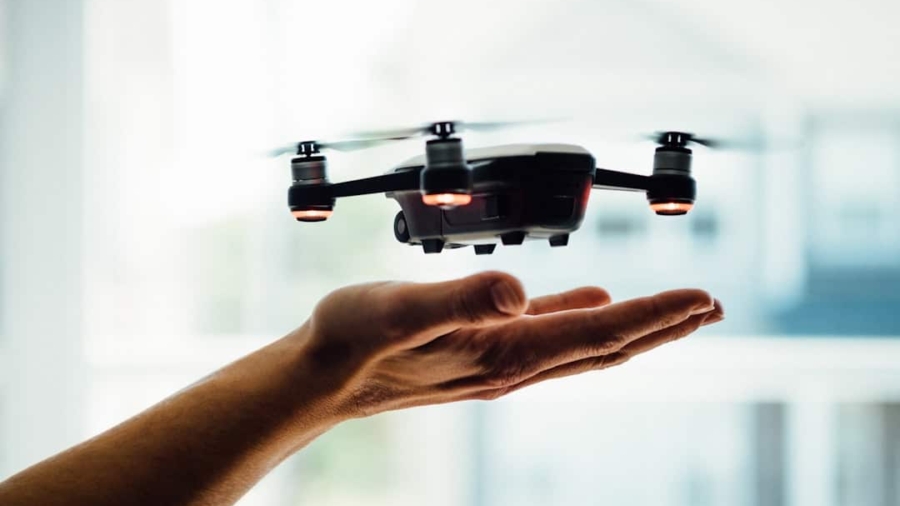In recent years, the advent of drone technology has revolutionized various sectors, and disaster relief and rescue missions are no exception. Drones, or unmanned aerial vehicles (UAVs), have emerged as critical tools in emergency response scenarios, providing unique capabilities that enhance situational awareness and operational efficiency. Their ability to access hard-to-reach areas, gather real-time data, and deliver supplies has made them indispensable in the face of natural disasters such as earthquakes, floods, and wildfires.
As the frequency and intensity of these disasters increase due to climate change, the integration of drones into disaster management strategies is becoming increasingly vital. The use of drones in disaster relief is not merely a trend; it represents a paradigm shift in how humanitarian efforts are conducted. Traditional methods of disaster response often involve significant delays due to logistical challenges, limited access to affected areas, and the need for extensive manpower.
Drones can circumvent many of these obstacles by providing immediate aerial reconnaissance, enabling responders to assess damage and prioritize their efforts effectively. This capability not only saves time but also enhances the safety of rescue teams by allowing them to gather critical information before entering hazardous environments.
Key Takeaways
- Drones play a crucial role in disaster relief and rescue missions by providing real-time data and imagery for response teams.
- In recent disaster relief efforts, drones have been used to assess damage, deliver medical supplies, and search for survivors in hard-to-reach areas.
- The advantages of using drones in disaster relief include their ability to cover large areas quickly, while limitations include battery life and weather conditions.
- Drones are changing the landscape of disaster response by improving efficiency, safety, and effectiveness in delivering aid and assessing damage.
- The future of drones in disaster relief and rescue missions holds potential for further advancements in technology and integration into emergency response protocols.
The Role of Drones in Disaster Response
Drones play a multifaceted role in disaster response, serving various functions that enhance the overall effectiveness of relief operations. One of the primary applications is aerial surveillance, where drones equipped with high-resolution cameras and thermal imaging technology can quickly survey large areas affected by disasters. This capability allows emergency responders to identify hotspots, locate survivors, and assess infrastructure damage from a safe distance.
For instance, during the aftermath of Hurricane Harvey in 2017, drones were deployed to capture aerial footage that helped authorities map out flooded regions and coordinate rescue efforts more efficiently. In addition to surveillance, drones are increasingly being used for logistical support in disaster scenarios. They can transport essential supplies such as food, water, medical kits, and communication devices to remote or inaccessible locations.
This capability was notably demonstrated during the 2020 COVID-19 pandemic when drones were utilized to deliver medical supplies and vaccines to isolated communities. By reducing the reliance on traditional ground transportation methods, drones can expedite the delivery of critical resources, ultimately saving lives in urgent situations.
Case Study: Drones in Recent Disaster Relief Efforts

A compelling example of drone utilization in disaster relief can be observed during the 2020 Australian bushfires. These fires ravaged vast areas of land, leading to significant loss of life, destruction of property, and devastating impacts on wildlife. In response to this crisis, various organizations employed drones for multiple purposes.
Aerial imagery captured by drones provided invaluable data for assessing fire spread and damage assessment. This information was crucial for firefighting teams to strategize their efforts effectively. Moreover, drones were instrumental in delivering supplies to remote communities cut off by the fires.
In one notable instance, a drone successfully transported food and water to a group of residents stranded by the flames. This operation not only showcased the logistical capabilities of drones but also highlighted their potential to bridge gaps in communication and resource distribution during emergencies. The Australian bushfires exemplify how drones can be integrated into comprehensive disaster response strategies, enhancing both situational awareness and logistical efficiency.
Advantages and Limitations of Using Drones in Disaster Relief and Rescue Missions
The advantages of employing drones in disaster relief are numerous and significant. One of the most notable benefits is their ability to operate in hazardous environments where human responders may face considerable risks. Drones can navigate through smoke, debris, or unstable structures without endangering lives.
This capability is particularly crucial during search and rescue operations where time is of the essence. Additionally, drones can cover vast areas quickly, providing real-time data that can inform decision-making processes. However, despite their many advantages, there are limitations associated with drone usage in disaster relief efforts.
One major concern is the regulatory framework governing drone operations. In many regions, airspace restrictions and licensing requirements can hinder the deployment of drones during emergencies. Furthermore, technical limitations such as battery life and payload capacity can restrict the operational range and effectiveness of drones in certain scenarios.
For instance, while drones can deliver small packages, they may not be suitable for transporting larger supplies or equipment needed for extensive rescue operations.
How Drones are Changing the Landscape of Disaster Response
The integration of drones into disaster response is fundamentally altering how humanitarian organizations operate during crises. Traditional methods often relied heavily on ground-based assessments and manual logistics, which could be slow and cumbersome. Drones streamline these processes by providing rapid aerial assessments that inform strategic planning and resource allocation.
This shift towards a more technology-driven approach allows responders to act swiftly and efficiently, ultimately improving outcomes for affected populations. Moreover, the use of drones fosters collaboration among various stakeholders involved in disaster response. Government agencies, non-governmental organizations (NGOs), and private companies are increasingly recognizing the value of drone technology in their operations.
Collaborative efforts have led to the development of standardized protocols for drone deployment during emergencies, ensuring that all parties can work together seamlessly. This collaborative spirit not only enhances operational efficiency but also promotes innovation as organizations share best practices and technological advancements.
The Future of Drones in Disaster Relief and Rescue Missions

Looking ahead, the future of drones in disaster relief appears promising as advancements in technology continue to evolve. Innovations such as artificial intelligence (AI) and machine learning are being integrated into drone systems, enabling them to analyze data autonomously and make real-time decisions based on environmental conditions. For example, AI-powered drones could identify survivors based on heat signatures or movement patterns without requiring constant human oversight.
Additionally, the development of larger drones with increased payload capacities could expand their utility in disaster scenarios. These advanced drones could transport heavier supplies or even evacuate individuals from dangerous situations. As battery technology improves, flight durations will extend, allowing drones to cover greater distances without needing frequent recharges.
This evolution will significantly enhance their operational capabilities during prolonged disaster response efforts.
Ethical and Legal Considerations of Using Drones in Disaster Relief
While the benefits of using drones in disaster relief are substantial, ethical and legal considerations must be addressed to ensure responsible deployment. Privacy concerns arise when drones capture aerial footage of affected areas, potentially infringing on individuals’ rights to privacy during vulnerable moments. Striking a balance between gathering necessary data for effective response and respecting personal privacy is crucial for maintaining public trust.
Furthermore, regulatory frameworks governing drone operations must evolve alongside technological advancements. Clear guidelines are needed to delineate when and how drones can be deployed during emergencies while ensuring compliance with aviation regulations. Collaboration between government agencies, humanitarian organizations, and technology developers is essential to create a cohesive legal framework that addresses these challenges while promoting innovation in disaster response.
The Impact of Drones on Disaster Relief and Rescue Missions
The impact of drones on disaster relief and rescue missions is profound and far-reaching. By enhancing situational awareness, improving logistical capabilities, and fostering collaboration among stakeholders, drones are transforming how humanitarian efforts are conducted in times of crisis. As technology continues to advance and ethical considerations are addressed, the potential for drones to save lives and improve outcomes in disaster scenarios will only grow stronger.
In an era where natural disasters are becoming increasingly frequent and severe due to climate change, the integration of drone technology into disaster management strategies is not just beneficial; it is essential. The ongoing evolution of drone capabilities promises a future where rapid response becomes the norm rather than the exception, ultimately leading to more effective humanitarian interventions when they are needed most.
In the realm of technological advancements, drones have emerged as pivotal tools in disaster relief and rescue missions, offering unparalleled capabilities in accessing hard-to-reach areas and providing real-time data. A related article that delves into the broader spectrum of technology enhancing connectivity is How Smartwatches Are Enhancing Connectivity. This article explores how smartwatches, much like drones, are revolutionizing the way we stay connected, highlighting the seamless integration of technology into our daily lives and its potential to aid in critical situations. Both drones and smartwatches exemplify the transformative impact of technology in improving efficiency and responsiveness in various sectors.
FAQs
What are drones?
Drones, also known as unmanned aerial vehicles (UAVs), are aircraft that are operated without a human pilot on board. They can be controlled remotely by a human operator or autonomously by onboard computers.
How are drones used in disaster relief and rescue missions?
Drones are used in disaster relief and rescue missions to assess damage, search for survivors, deliver supplies, and provide real-time situational awareness to first responders. They can access hard-to-reach areas and provide valuable data to aid in decision-making.
What are the benefits of using drones in disaster relief and rescue missions?
Using drones in disaster relief and rescue missions can help to improve response times, reduce risks to first responders, and provide valuable information to aid in decision-making. Drones can also cover large areas quickly and efficiently, and can be deployed rapidly in emergency situations.
What are some examples of drones being used in disaster relief and rescue missions?
Drones have been used in various disaster relief and rescue missions around the world, including after natural disasters such as earthquakes, hurricanes, and floods. They have been used to assess damage, search for survivors, deliver medical supplies, and provide communication capabilities in areas with disrupted infrastructure.
What are the challenges of using drones in disaster relief and rescue missions?
Challenges of using drones in disaster relief and rescue missions include regulatory restrictions, limited battery life, adverse weather conditions, and the need for skilled operators. Additionally, privacy and ethical considerations must be taken into account when using drones in emergency situations.

